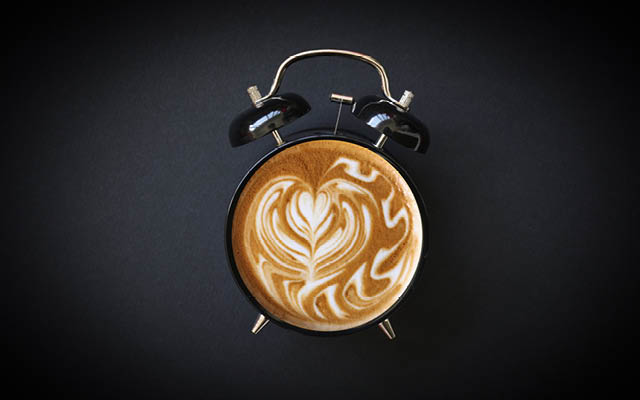Many of us down caffeinated drinks to wake ourselves up in the morning, stay more alert in the evening, or bolster our mood. But the caffeine we’re imbibing may not be working exactly the way we think it is. Here’s what generally happens when you quaff a caffeinated drink and your body gets hit with the jolt.
Within Seconds
Caffeine, like alcohol, is one of the few chemicals that is soluble in both water and fat, so it begins to absorb quickly through the stomach lining and small intestine. From there, it penetrates your cells and circulates throughout your body, appearing later in bodily fluids, including saliva,
semen, and breast milk.
10 to 20 Minutes
You begin to feel more alert. Caffeine’s chemical makeup is similar to adenosine, a neurotransmitter that signals your brain to slow down when you’re tired. Caffeine attaches to adenosine receptors and blocks them from putting on the brakes. This allows your brain’s natural stimulants, like dopamine, to flow.
30 to 45 Minutes
Caffeine peaks in your blood and slows your absorption of dopamine. This neurotransmitter helps you feel focused, motivated, and energized — and can cause heart palpitations and feelings of fear. Caffeine also blocks the chill-out adenosine receptors in your kidneys, increasing the urge to urinate.
1 to 5 Hours
Your body realizes it’s being drugged and releases adrenaline in self-defense. This increases your heart rate and blood pressure and tells your liver to attack the caffeine. Via demethylation of caffeine, liver enzymes then create metabolites, which are metabolized into uric acid and excreted in urine (recent research on uric acid suggests that this waste product may be an important bellwether for cardiometabolic health. See “Uric Acid: A New Metric for Heart Health” for more.)
5 to 6 Hours
The buzz subsides as your liver breaks down the caffeine. But the timing varies by individual: Smokers typically process the caffeine in three hours (it’s thought the process is accelerated by the chemicals in cigarette smoke). People using oral contraceptives may require 10 to 12 hours (the reason for this is unclear).
12 Hours
Withdrawal kicks in. As caffeine’s chemical roller-coaster ride comes to an end, its effect on your cerebro- and neurovascular system dissipates. Your blood vessels relax. As your body attempts to rebalance itself, you may feel a wave of fatigue or the onset of a headache.





This Post Has 0 Comments